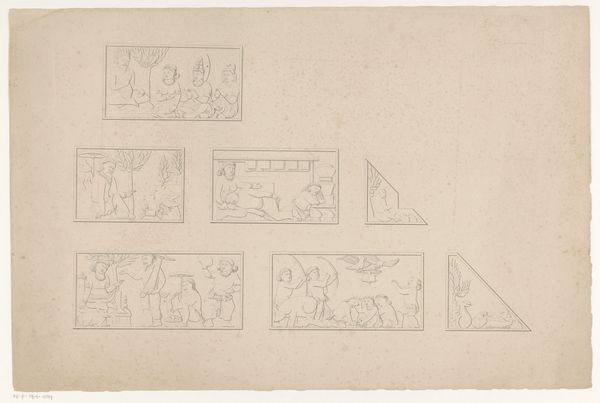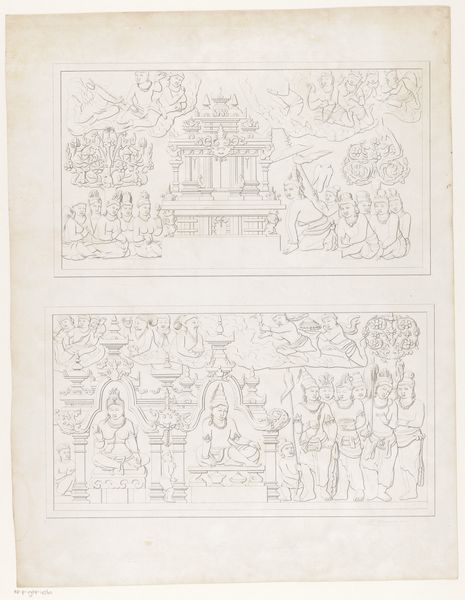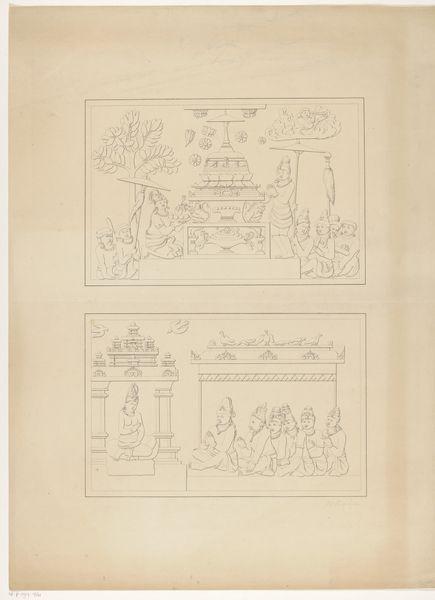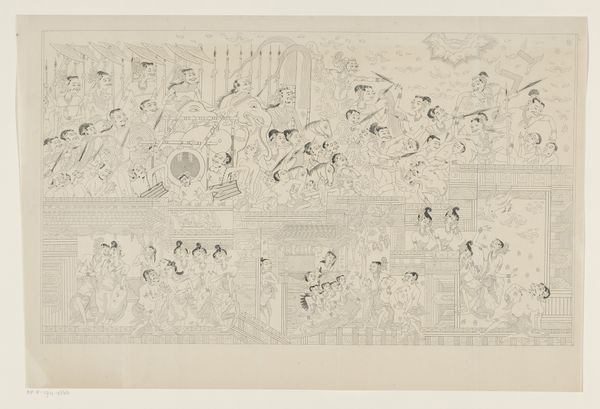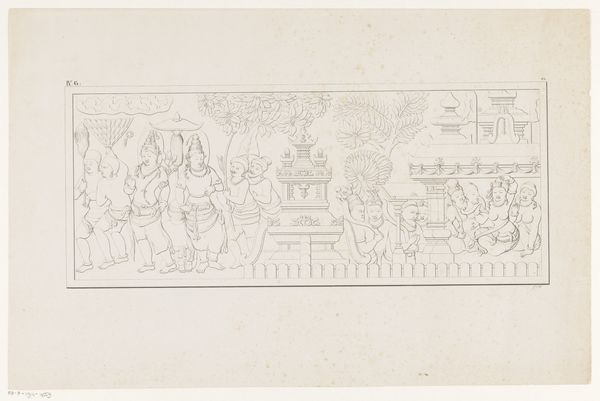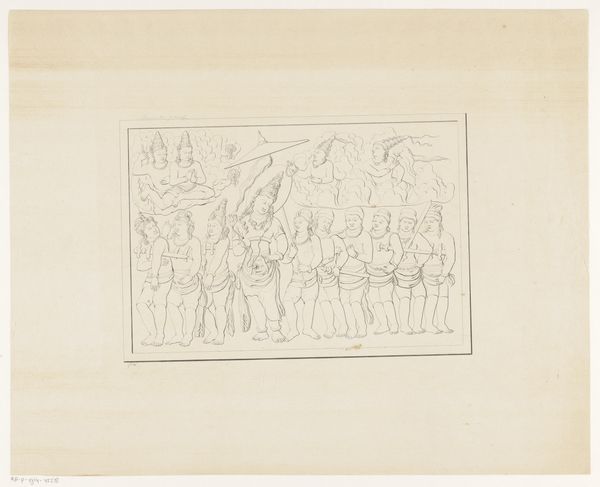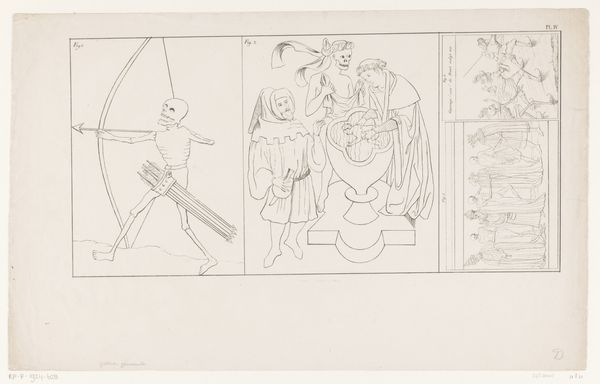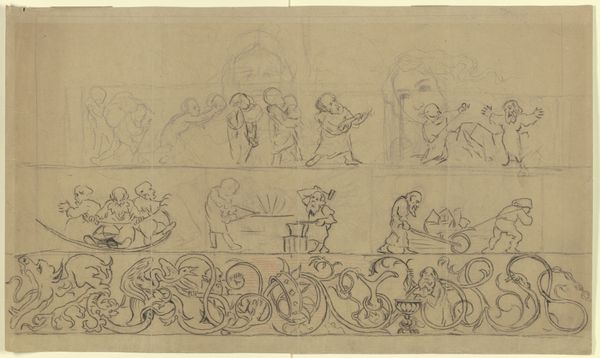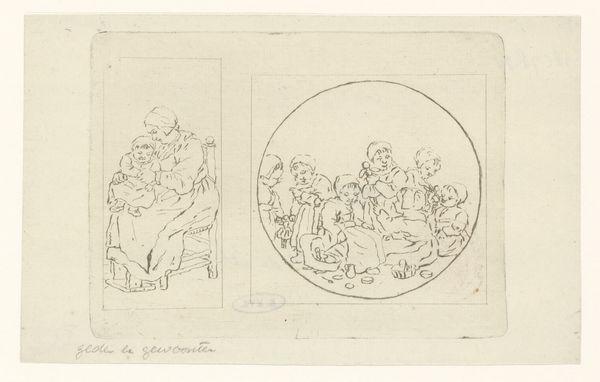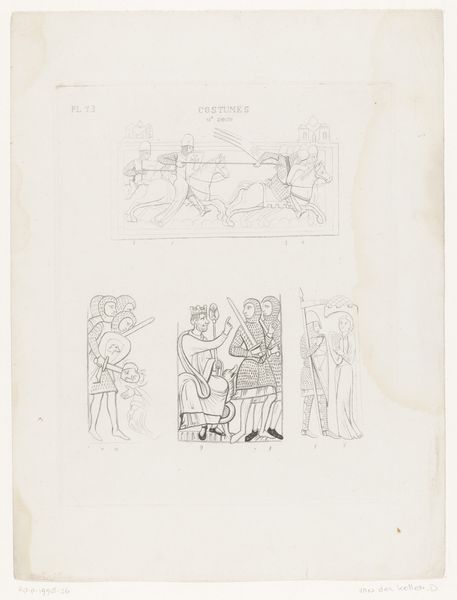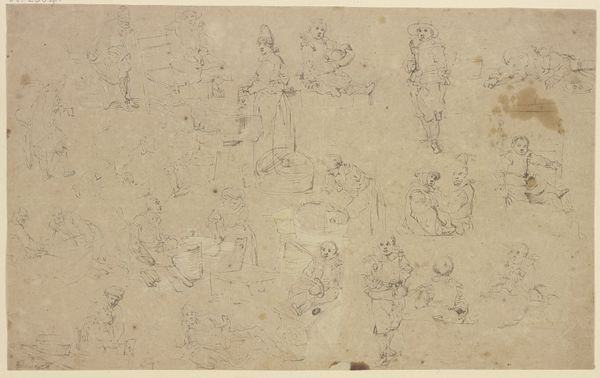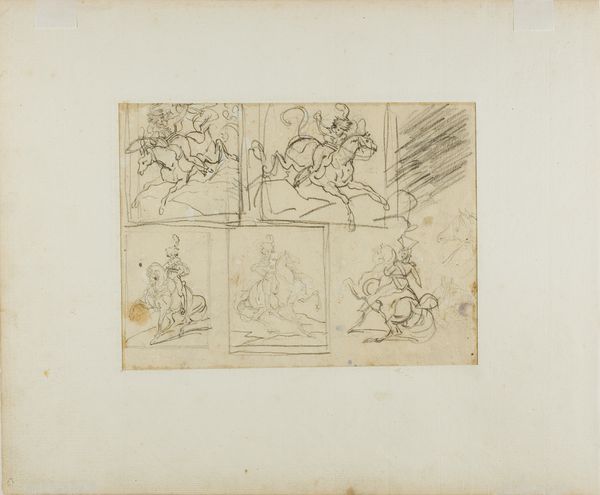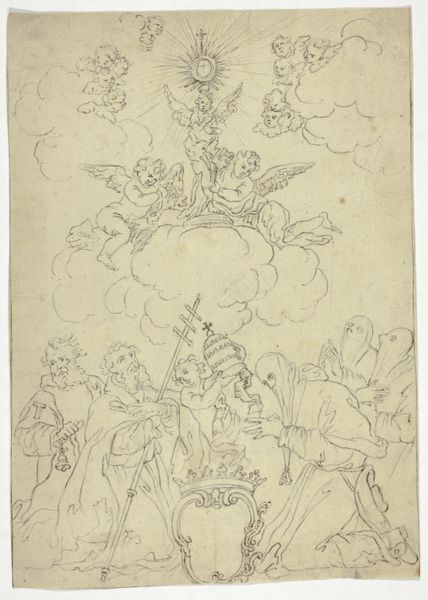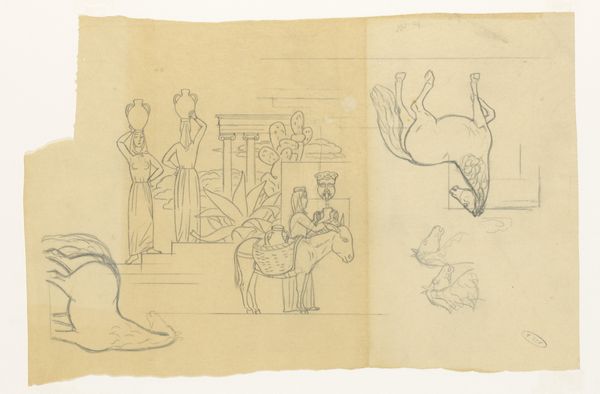
drawing, paper, pencil
#
drawing
#
narrative-art
#
asian-art
#
figuration
#
paper
#
pencil
Dimensions: height 491 mm, width 657 mm
Copyright: Rijks Museum: Open Domain
Curator: Looking at "Oosterse goden en figuren," created between 1841 and 1858 by Andries Wiemans Cz., I’m immediately drawn to its ethereal quality. It's a pencil drawing on paper, depicting three distinct narrative scenes, almost like a storyboard from another world. Editor: It's undeniably gentle, isn’t it? The faint lines, the suggestion rather than stark declaration… it's like peeking into someone's dream journal. I wonder what narratives were swirling around at the time to inspire these fantastical images. Curator: Well, during this period, there was increasing Western fascination with the "Orient," often filtered through colonial perspectives, of course. Wiemans seems to be exploring this exotic imagery, likely based on second-hand accounts or existing artistic tropes rather than direct experience. You can see the influence of popular illustrations in travelogues or ethnographic studies. Editor: You're right. There's a detached curiosity here, not an insider's perspective. But isn't it interesting how this imagined “Orient” becomes a canvas for exploring the artist's own sensibilities? It's all a projection, isn't it? These gods and figures almost float, unburdened by earthly weight, which could suggest a critique, intentional or not, of the heavy-handed portrayals common in colonial depictions. Curator: It's a layered viewing experience, isn't it? We have these figures depicted, probably derived from existing stereotypes, presented with almost whimsical execution, giving it all an element of commentary through composition and style. Editor: Precisely. This quiet rebellion…it draws me in more than any bold statement ever could. It really goes to show that even in apparent artistic mimicry, the heart of the artist might express itself with utmost honesty, even if unknowingly. Curator: The drawing becomes more than just a reflection of external fascination. It mirrors the internal workings of the artist, his hesitations, questions, perhaps even his own unwitting biases, presented to us through these delicate depictions. Editor: Yes! I think I like this unassuming sketch more each minute. There's such value in the space it gives to interpretation, and its soft execution becomes disarming and charmingly self-aware. Curator: I couldn't agree more. This seemingly simple sketch contains such a trove of stories, interpretations, and a window into a very specific, complex moment in history and the creative mind of its creator.
Comments
No comments
Be the first to comment and join the conversation on the ultimate creative platform.
